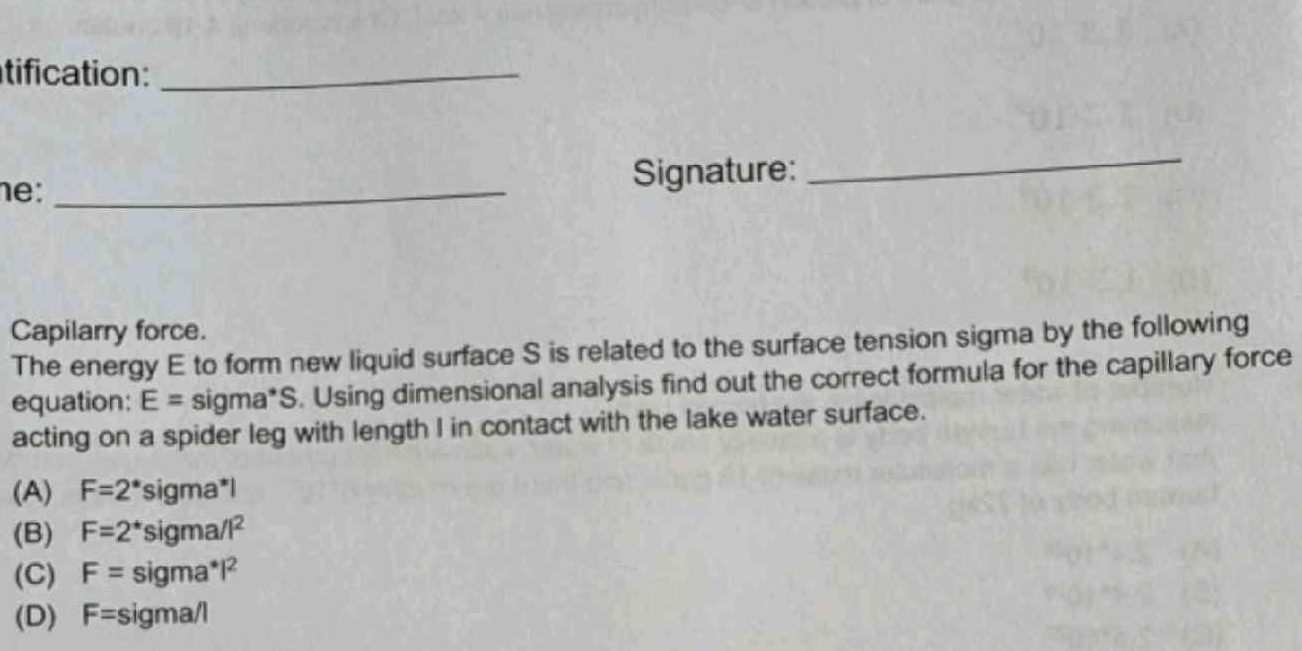Using dimensional analysis, find out the correct formula for the capillary force acting on a spider leg with length l in contact with the lake water surface.

Understand the Problem
The question is asking for the correct formula for the capillary force acting on a spider leg, using dimensional analysis based on the provided relationship between energy, surface tension, and surface area.
Answer
$$ F = 2 \cdot \sigma \cdot l $$
Answer for screen readers
The correct formula for the capillary force acting on a spider leg is: $$ F = 2 \cdot \sigma \cdot l $$
Steps to Solve
-
Understanding the Relationship
The energy $E$ required to form new liquid surface $S$ is given by the equation: $$ E = \sigma \cdot S $$ where $\sigma$ is the surface tension and $S$ is the surface area.
-
Identify the Dimensions
The dimensions of energy $E$ are $[E] = [M][L^2][T^{-2}]$. The dimensions of surface tension $\sigma$ are $[\sigma] = [M][T^{-2}][L^{-1}]$. The dimensions of surface area $S$ are $[S] = [L^2]$.
-
Relate Linear Dimensions to the Force
The capillary force $F$ can be related to the surface tension and length $l$: $$ F = R \cdot \sigma $$ where $R$ is a length scale. From the dimensional consistency, we can set $R = l$, leading to: $$ F \propto \sigma \cdot l $$
-
Establish the Final Formula
Considering that we can have a prefactor (which will be determined empirically or theoretically) and the dimensions, we have: $$ F = k \cdot \sigma \cdot l $$ where $k$ could be a constant factor based on geometrical considerations.
-
Select the Correct Answer
From the given choices, we can assess the options. The option (A) $F = 2 \cdot \sigma \cdot l$ represents the relationship we derived.
The correct formula for the capillary force acting on a spider leg is: $$ F = 2 \cdot \sigma \cdot l $$
More Information
The formula captures the relationship between surface tension, length of contact with the liquid, and the resulting capillary force. The factor of 2 may arise from specific geometrical considerations in contact conditions.
Tips
- Confusing surface area with linear dimensions.
- Neglecting the dimensional consistency when deriving relationships.
- Overlooking the presence of empirical factors or constants.
AI-generated content may contain errors. Please verify critical information